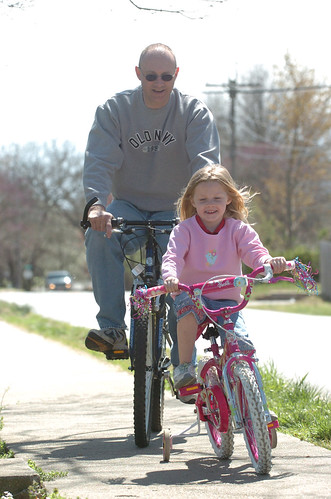
News
By Barbara McCann, May 10, 2010
The Centers for Disease Control and Prevention become one of the first agencies to weigh in on the federal transportation reauthorization – and transportation choice is front and center in their recommendations. This is their opening statement on what they see as the opportunity:
“…integrating health-enhancing choices into transportation policy has the potential to save lives by preventing chronic diseases, reducing and preventing motor-vehicle-related injury and deaths, improving environmental health, while stimulating economic development, and ensuring access for all people.”

Almost all of the key recommendations in the document relate to the adoption and implementation of Complete Streets policies:
- Promote healthy community design through adoption of policies that “encourage a dense network of connected streets which serve the needs of all transportation modes… mitigate the potential adverse effects of motor vehicle travel” – and specifically naming Complete Streets policies.
- Promote active transportation by providing states with tools such as complete streets measures – using the language found in the draft transportation reauthorization bill in the House to describe Complete Streets (“comprehensive street design”). This section also has extensive recommendations on increasing bicycle and pedestrian infrastructure.
- Expand public transportation through increased funding, including funding program requirements that encourage investments in all modes of transportation. The public transportation section also details how to “promote bicycling and walking to public transportation stations by making these connecting trips easier, faster, and safer,” by assessing safety hazards, removing barriers, and installing bicycling and walking infrastructure near transit stops.
- Reduce injuries through the traditional measures of safety laws (e.g. distracted driving laws) and technology, but also through reducing single-occupancy vehicle trips and bringing health, transportation, and community planners together to address safety through design.
- Improve air quality by promoting transportation choices and reducing exposure to air pollution.
- Reduce exposure to unhealthy and dangerous environments through increased pedestrian and bicyclist safety and use of health impact assessments.
- Increase data collection and research on the links between transportation and health, including more robust collection of data on all users of the transportation system.
Not only that, the glossary includes an excellent and nuanced definition of Complete Streets!
As if to drive home the unity of the public health community, a coalition of national organizations also just announced the release of the National Physical Activity Plan.
The Plan envisions a future where “all Americans will be physically active and they will live, work, and play in environments that facilitate regular physical activity” and proposes a comprehensive set of policies, programs, and initiatives within the transportation and land use sector to achieve that goal:
- Increase connectivity and accessibility to essential community destinations, including adoption of Complete Streets policies at the national, state, county, and local levels.
- Ensure infrastructure supports active transportation and other forms of physical activity through increased accountability and data collection.
- Support and increase incentives for community design, infrastructure projects, systems, policies, and initiatives to include active transportation measures, including through the adoption of Complete Streets policies and standards.
- Integrate public health planning into land-use, transportation, community design, and economic development planning.
The broad coalition that created the plan includes a number of our Coalition members, such as the YMCA of the USA and AARP. The National Alliance to Promote Physical Activity is charged with overseeing its implementation.
These national initiatives echo the calls made from residents, elected officials, and public health advocates in communities large and small across the country: Our recent Complete Streets Workshop in Bozeman, MT was sponsored by RiverStone Health, the region’s public health provider. Mississippi cities Tupelo and Hernando adopted Complete Streets ordinances last month to help provide more opportunities for physical activity and to encourage healthy living. In Illinois, DuPage County’s policy was adopted as the “Healthy Streets Initiative.” And large cities like Miami, Saint Paul, and Knoxville recognize the health benefits of complete streets in their Complete Streets resolutions. As a measure of how much Complete Streets has become a mainstream concern in public health circles, a magazine aimed at corporate human resources managers who work to promote employee health recently made Complete Streets their cover article. Clearly, the public health community sees Complete Streets as a healthy development.
Related News

© 2025 Smart Growth America. All rights reserved
Site By3Lane Marketing














